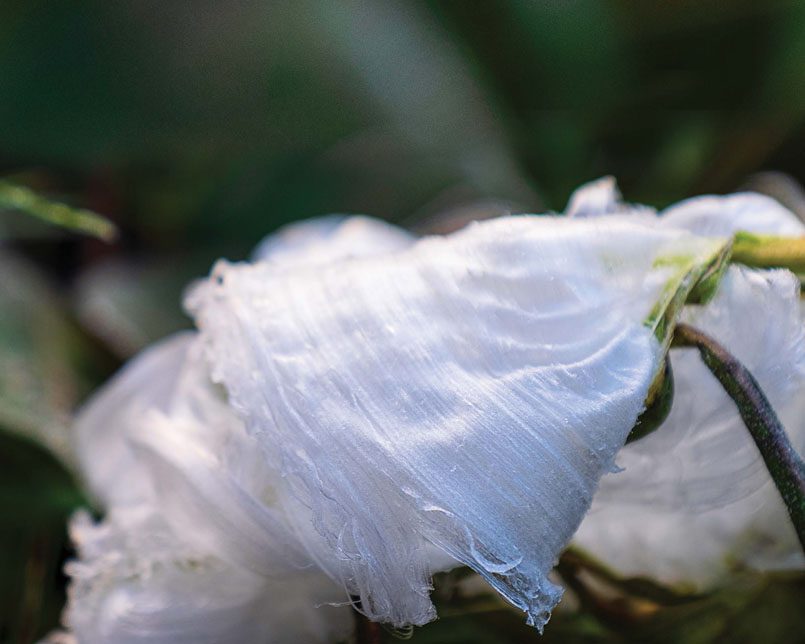27 Oct 2021 Frozen Beauty hiding in plain sight
Story and photo by Linda Henderson
You likely have driven by them on a cold frosty November morning. You might have wondered who would litter the ditch banks with all those white plastic bags? But if you look much closer, you may find that what you thought was trash in the ditch was frost flowers.
Frost flowers are created when temperatures in the early morning drop below freezing. Thin layers of frozen sap will move up from the confined space of the root system to the top of the plant’s stem, forming unique patterns that look like petals or flowers. If you search frost flowers on the web, you may find they are also known as frost faces, ice castles, ice blooms, rabbit frost, or crystallofolia.

These rare formations occur usually in the late fall or early winter. Weather conditions must be exactly right for frost flowers to materialize. They occur when air temperatures are freezing but the ground temperatures remain warm enough that plants’ root systems have not yet gone into winter’s hibernation. The hydraulic action of water causes long thin cracks in the stem. The result of this capillary motion causes the construction of white frosty ribbons of ice unfolding from the extended grassy stalks.
The first time Jim and I observed the phenomenon of frost flowers was when we were hiking in a creek bottom in the Ozark National Forest in Van Buren County. Our first impression was how in the world would all these plastic bags have gotten here. On closer inspection, we saw that this was ice prodding out of grassy stems. This encounter with my first frost flowers started my fascination with this natural wonder. The problem with this attraction is it only occurs once in a season. Once the sap has escaped from its roots, the frozen beauties will be gone until next year.
If you want to look for frost flowers, here are some things to keep in mind. If the weather remains warm into November and a cold snap is predicted with temperatures expected to drop into the 20s in the early morning hours, get ready to search. Hunt for hints of white. On first impression, you may think they are tossed-out paper. Start early before the sun heats up the atmosphere. Look in moist, shady spots. The further north you are, the more likely you are to find them in early November, and as the month progresses and weather cools in the morning, you may find them in the southern counties of the 501.
Look for tall-stemmed, native grasses. Those types of plants are more likely to yield frost flowers. Every frost flower is different. Some are wool-like, some are feather-like, and others resemble spears.
The frost flowers disappear as the sun rises and the air temperature increases to above freezing.
So, as our weather starts to cool, sharpen your gaze, and look for the frozen beauties hidden in plain view. You never know what you might see as you travel the byways of the 501.
- Landscapes of liberty - June 30, 2024
- Getting the shot of a lifetime - February 1, 2024
- The road to Gothic Mountain - October 9, 2023








